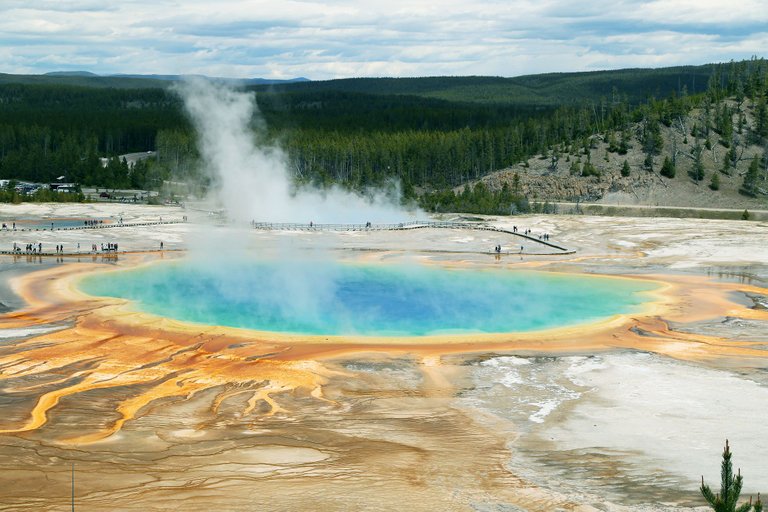
Source: Pixabay
The Yellowstone National Park is immensly popular for being a touristic attraction. Deep under the supervolcano lays a potential world disaster waiting to happen, if Yellowstone Park eruptes the human race is doomed. In 2012 the U.N calculated that in an event of a vulcanic winter worldwide food reserves would dwindle to an equivalent of 75 days worth of supplies. Therefore NASA wants to prevent this eventual cataclysm and has worked out an ambitious plan to counter this worldwide threat.
How to Save the Planet
Our planet counts approximitly 25 known volcanos every 100.000 years one of them erupts, in Yellow Stone's case it is every 600.000 years. Last time that a hotspot under Yellowstone erupted almost all life in the northern west of the United States was wiped out. Back then more than a 1000 cubic miles of vulcanic ash flew into the atmosphere, causing a significant drop in temperature around the world. For the moment nothing seems to indicate that Yellowstone will erupt any time soon, but theoretically it should as it has been 600.000 years since the last one.
According to Brian Wilcox from NASA's Jet Propulsion Laboratory it is better to prevent than to cure. The threath of a supervolcano going berzerk is far more imminent than that of a comet or asteroide colliding with earth. Wilcox acknowledges that there are similarities between those 2 threaths and the ways of dealing with them.
NASA is searching for many solutions to this problem, scientists say the magmachamber can be kept under control by cooling down the supervolcano. Approximately 60 to 70 percent of Yellowstone's heat escapes into the atmosphere through the park's geysers, the rest of the heat adds up underground till it explodes. The underground heat should be cooled down or vented away to the surface.

Source: Pixabay
Win-win Situation ?
NASA's solution consists of pumping huge amounts of pressurized water in the magmachamber. With a pricetag of 3.5 billion dollars it will not be the cheapest project so far, but well worth the money considering the fact that humankind's existence depends on it. Some researchers at NASA proposed a slightly different version of this system where water would circulate in a closed system. The heated water coming from underneath the vulcano could be used to generate electricity thus creating a geothermic plant, while at the same time a great amount of heat would dissipate to the surface. What a win-win situation you would think, saving humanity and generating electricity as an extra.
But there is a catch, no one knows for sure how to drill these shafts that are leading to the magmachambers. If something goes wrong we may very well provoce the mass eruption instead of preventing it. No matter which project NASA is going to applie, it will be one for generations to come. Workers who will be there at the start aren't gonna live long enough
to see the end of it. Wilcox explained to the BBC that it could take at least 1000 years to cool Yellowstone Park down to a level where there is no more threath of mass eruption. Wilcox added 'it is important to think in long terms while profiting from the advantages that come along, like the geothermic plant for example'.
Thanks for reading,
Funcore
They better can do something... I think science 🔬 it will do the best to keep humanity safe. Interesting post 😊👍🏼🌺🌷☘️🍁
Without sounding gloomy I think such represent the RESET switch for the planet. Attempts at fixing could accelerate the threat as it stands. If it blows we start afresh!
With the potential of a world wide winter caused by volcanic eruptions, why is everyone so worried about supposed global warming??
I wouldnt put much hope in the lying nasa organization,but with God all things are possible